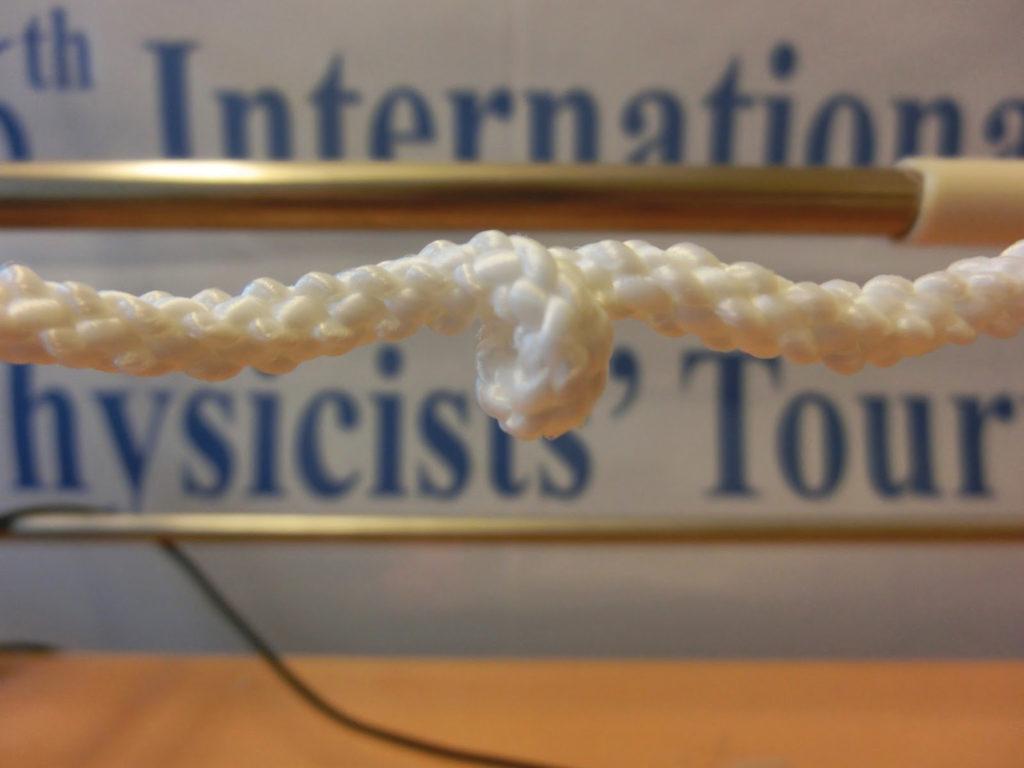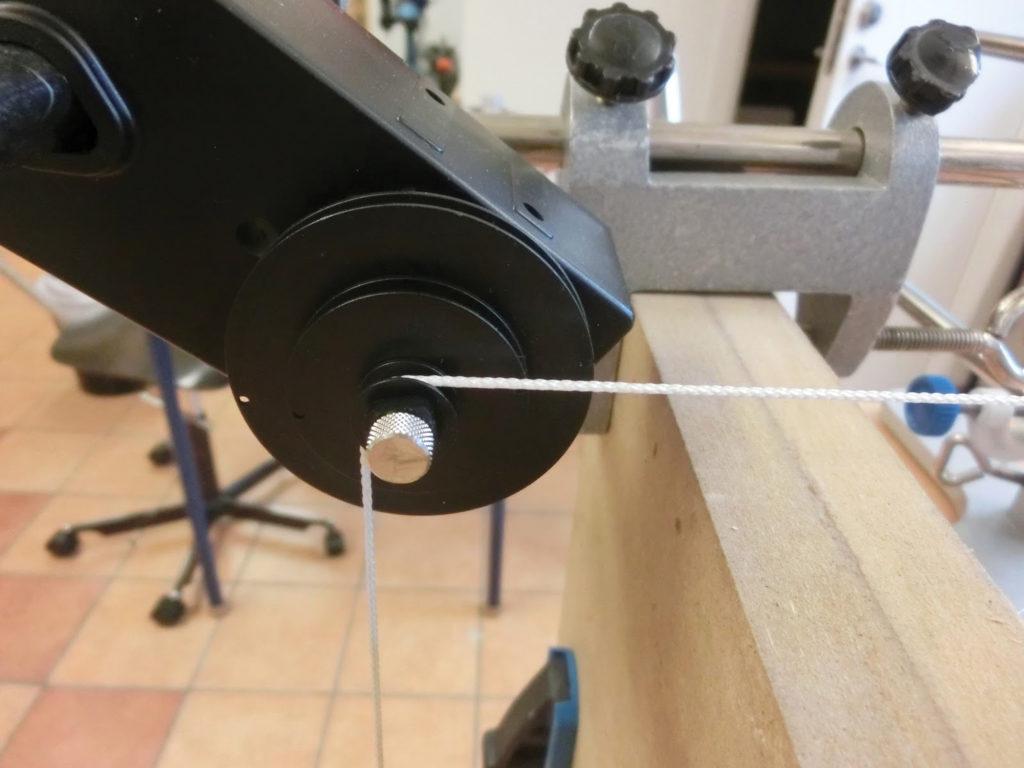Investigating Loops and Coils with Vernier Sensors
New Zealand electrical engineer, Patrick Herd, used Vernier sensors to help Swedish teens prepare for the International Young Physicists’ Tournament last year. One of the problems the students were investigating dealt with the loops and coils that develop while twisting rope. Patrick and physicist Felicia Ullstad designed and built a rig to help the team study the twisting of the rope under tension. The study included how much the rope shortened with each extra loop formed and the speed changes that accompanied the loop formation.
An electric drill controlled by a knife switch was used to twist the rope. A magnet was attached to the drill chuck and a Vernier Magnetic Field Sensor detected and counted the turns of the drill. Several design iterations were involved with measuring the linear contraction of the rope. First, a Motion Detector was tried and abandoned due to noisy results. Next, Patrick rigged a homemade photogate and pulley using a Light Sensor and a light in a tube, but the resolution for this measurement was not fine enough. Finally, a Rotary Motion Sensor was used in place of the pulley, giving smooth, high-resolution data.

A Dual-Range Force Sensor measured the tension in the rope. Trials were conducted with the rope held to a constant length and with the force sensor hanging from the rope with an attached mass to control the allowed tension. While Team Sweden did not take top honors in the tournament, they certainly learned a lot and had some fun! After five rounds of competition, Team Sweden came in 11th place out of a field of 28 countries.

For more information about the International Young Physicists’ Tournament, go to www.iypt.org/Home.
For Patrick’s original blog post about this experiment, with many more photos, go to www.pnuke.co.nz/search/label/IYPT
